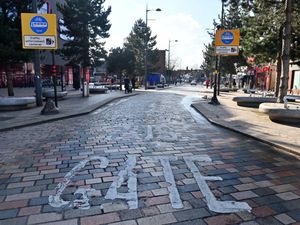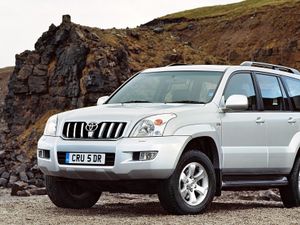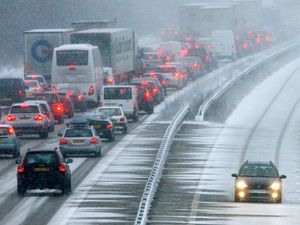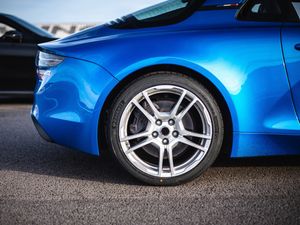How to clean a car like a pro
As more look to save money by washing their car themselves, here are some top tips from the best in the industry..
Going back a few decades, it would have been almost unheard of to pay someone else to clean your car, but in recent times the rise of ‘drive-in car washes’ and a growing number of valeting companies has seen many people give up on doing it themselves.
However, as the cost-of-living crisis continues to bite, a new survey from eBay has found that more are choosing to adopt the DIY mentality, with 18 per cent of the 2,000 people surveyed stopping using professional car washing services in the last 12 months, with the majority saying this was down to money – those £15 car washes can quickly add up over time.
But how can you clean a car properly yourself? We spent the day with Richard Tipper, owner of Perfection Valet, and widely regarded as one of the UK’s best car detailers. He started out in 1989 when he was 17 cleaning Fiestas and Polos, though these days he’s far more likely to work on Porsches and Ferraris – many of the vehicles he works on being worth hundreds of thousands, if not millions, of pounds.
Today’s subject is an exceptionally grubby Porsche, which has been parked next to a building site that has been untouched for several months. Let’s look at how you can clean a car like a pro.
Preparation

Tipper has been professionally cleaning cars for almost 35 years and says he still loves doing it to this day. He puts this down to the ‘satisfaction’ of seeing the improvement, and that the first step of this comes from preparation. “Jobs become a chore when you can’t do it properly or the products don’t work,” he tells us.
So the first step is to get everything ready before you need it, from your buckets of water to a pressure washer (ideally) that’s connected to power and with the water turned on. Any products you will be using should be out and ready to use too.
You should also consider where the car is parked, and if there’s an option to move the vehicle from under trees and out of direct sunlight, it can help save extra work later on.
Wheels first

Once the preparation work is carried out, Tipper says it’s a good idea to focus purely on the wheels next. These are an area of a car that can quite easily gather the most dirt, especially if they’ve not been cleaned for a long time.
Tipper recommends using dedicated cleaners to speed up the process and make your life easier. Called a ‘de-ironiser’ cleaner, you spray this product on and it changes colour as it ‘reacts’ and dissolves the brake dust. It’s fantastic to watch, and part of that ‘satisfaction’ of seeing a product doing its job. Various wheel brushes are used to agitate the product, with some ‘wheel woollies’ used to be able to get deep into the spoke. Once all areas are done, a rinse is all that’s needed for the wheels to look as good as new.
Get as much dirt off the car as possible before you start ‘washing it’

Once the alloys have been ticked off, it’s time to tackle the rest of the car. Tipper talks about the ‘safe wash’ technique, which involves getting as much dirt off the car as possible before you actually ‘touch’ the car.
He uses various products for this, with the first being a pre-wash cleaner. It’s a product called Autoglym Multi Wash, which can be heavily diluted depending on what it’s being used for. It’s applied through a pump sprayer, just like those you can buy at garden centres, before being rinsed off a couple of minutes later. Its cleaning capability is clear to see. After this, through the pressure washer, Tipper applies what’s called ‘snowfoam’, which helps dissolve any remaining dirt. This is left for a few minutes to do its thing and then can be washed off again.
Start with the dirtiest areas first

It’s now time to tackle the actual ‘washing’ of the car, and don’t worry, those steps above don’t actually take very long. The best way to do this is to get one ‘wash’ bucket and another ‘rinse’ bucket, ideally with guards at the bottom to trap the grit, helping to prevent micro-scratching during washing. You should use a dedicated car shampoo too as Tipper says “washing up liquid could strip protective coatings off the paint”. A proper wash mitt should be adopted over a sponge as well.
It’s recommended that you start with the cleanest areas of the car first (generally the roof and bonnet), while the pro says that you should wash from the top down and rinse from the bottom up.
Consider a rinse aid and use a towel drying

Once the car is thoroughly washed and rinsed, Tipper advises using a rinse aid to help add some protection to the paint, though it’s no wax or sealant substitute.
This also helps when it comes to drying, which is a must if you want a streak-free finish. To dry, he uses a ‘weave’ towel, but microfibre towels can also be used, and it’s impressive to see just how much water these can absorb. These need wringing out as necessary, while you should try not to apply much pressure when drying the car as this could cause small marring.
While it’s probably a bit much for the DIY home car cleaner, Tipper also has a special air hose that blows any water from the car and prevents drips that come from areas like badges and door mirrors.
Finishing touches

If you really want to go the extra mile and make your car look like a ‘pro’ has done it, there are various finishing touches to look at, depending on how far committed to the cause you are.
You could apply a gel to the tyres to give it that ‘shine’ that’s common with valeters, while dressings can be used on any plastic trim, which often fades over time. Tipper just advises against using any silicon-free products as you don’t want to give them an artificial finish. All of the products used are available on eBay, too, with the sales platform seeing a sharp increase in the number of car cleaning products sold online recently.
But the best advice Tipper gives is to keep on top of cleaning your car. The more often you do it, or the less it’s left, the easier the job will become.





